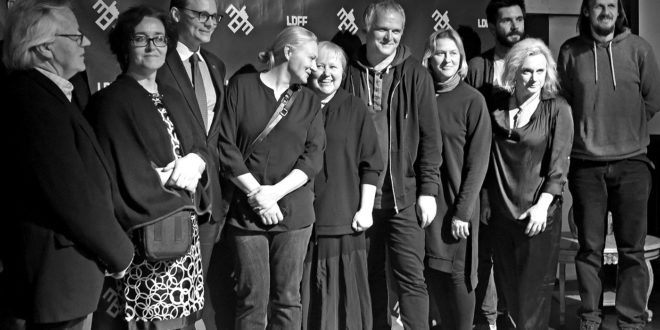Vida Kuprys.
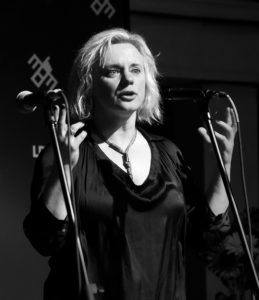
Chicago recently hosted the best of Lithuanian documentary films. Running from April 24 to May 4, the Lithuanian Documentary Film Festival (LDFF ) was organized by Audra Januškienė, a film connoisseur who also happens to run a successful catering service. Initially, she intended to show only several films produced by her friends. Her modest plan soon developed from “a kindergartener into a teenager overnight.” It became a week-long festival featuring eight established and emerging Lithuanian filmmakers.
The festival opened at the Chopin Theater, an intimate cinema space located in Wicker Park, one of Chicago’s artistic enclaves. Other films were shown at different venues: the Balzekas Museum, the Jesuit Youth Center and Čiurlionis Gallery in Chicago, the Ateitis Foundation in Lemont and at a commercial AMC Theater in the suburb of Woodridge. All of the directors except one were in attendance at the sold-out screenings.
The festival started with the screening of Audrius Stonys’ film “The Woman and the Glacier” (2016). This award-winning film was previously featured in a number of European film festivals. Stonys and his crew traveled to a glacier in the Tian Shan mountain range of Kazakhstan. He had heard, that a Lithuanian glaciologist, Aušra Revutaitė, worked there alone at the research station for some 30 years. He was convinced that she would be a great subject for a film. “I traveled to these mountains without knowing anything. You can’t do proper research, because the place is so difficult to reach. So we just went.” Ultimately, everything turned out rather differently than he had expected. “In my film proposal, I wrote that I plan to make a film about a mortal, fragile woman, and the eternal glacier. But in reality it was vice versa: I found a very strong woman and a very fragile glacier that was melting and crumbling. The same was true (of my understanding) of loneliness. I thought it must be horrible; how can you stand being alone for 30 years? But what I discovered is that this is the most precious thing that she has. And she is so happy to be alone.”
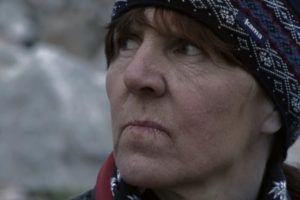
The 56-minute film is full of raw and powerful footage – soaring mountains, vast snow-swept landscapes. At times you see rivulets of melted ice turning into gushing rivers. The camera snakes through endless caverns of ice dripping sparkling water, while boulders relentlessly tumble down the mountainside. In this midst of this fierce landscape, a solitary woman goes about her business measuring and recording changes in the glacier. There is hardly any dialogue – she only speaks a few sentences throughout the entire film. Moviegoers commented that the film was a meditative piece, a study of time and space.
After the film, Chicago filmmaker Arvydas Reneckis led a Q&A session. He suggested that “The Woman and the Glacier” falls squarely within the Baltic Poetic Documentary tradition. Stonys acknowledged that indeed his early mentors were the founders of that particular school: Herkulis Šablevičius, Robertas Verba and Latvian Jewish filmmaker Herz Frank.
The Poetic Documentary movement is unique to Lithuania and Latvia. In the early 1960s, young Baltic filmmakers sought admission to the highly-rated Moscow and Leningrad film schools. But upon returning to their home countries, they faced a dilemma: How do you produce a legitimate documentary film, when the Soviet apparatchiks censor everything? Stonys shared this favorite quote from a Latvian colleague: “We couldn’t tell the truth, we didn’t want to lie, but we wanted to make films.” Stonys continued, “The way to do this was through poetry. Poetry is difficult to censor. It has its own language.” And so the Poetic Documentary School developed, characterized by producing films which focused on portraying experiences, filming images, and relying minimally on the narrative.
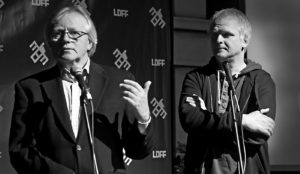
Stonys explained that now in the “age of information” Poetic Documentary is an especially potent choice. “You can Google ‘Tian Shan Mountains’ and find all the necessary information about them. You can find information about the woman scientist. The only thing you cannot find online is that feeling of what it means to be alone for thirty years. This was our primary goal in making the film.”
Viewers were curious about how the filmmaker addressed the dangerous filming conditions on the glacier. “It took us three years to make this film because you can visit that place for only a short period during the year, only three months during the summer. At the end of October, it would start snowing, and the place was unreachable. If you didn’t leave before the snow started, you’d be stuck till June of the next year. Shooting conditions were challenging. Imagine you are 3500 meters above sea level. There is 30 percent less oxygen than normal — you cannot sleep; you cannot breathe normally; your brain plays crazy tricks on you. So we could only stay there for two weeks at a time without ruining our health.”
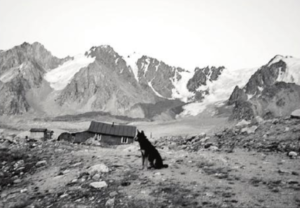
Others inquired, why he opted to have no dialogue in the film. Stonys responded, “At the beginning, I thought, I will go there, and Aušra Revutaitė will tell me what she feels, how she lives in these difficult conditions, how she deals with loneliness and all that stuff, but she was not very talkative. So I was desperate – how can I make a film if she does not speak? But then I thought, it’s good that this happened because this is reality: she does not talk with anyone. She spends her life in silence. I should respect this and not try to break her with conversation.” Stonys spoke about another stressful aspect of making the film. When he first reached the mountain range, he thought, “Why do I need a movie camera? A still camera would work as well because nothing moves here. There are no trees, no people, no birds; there is nothing. When you place a film camera on a tripod, it’s like filming a still photo. Then I realized that the only thing that does move in this place is time. But how do you film the flow of time?” He acknowledged that he was fortunate to have cinematographer Audrius Kemežys on his team. “He could capture movement even in the stillest shots.” (Sadly, Kemežys died in November 2018 at the age of 46. This February 16 he was awarded the Lithuanian National Prize for Culture and Arts posthumously, for a lifetime of outstanding cinematic work.)
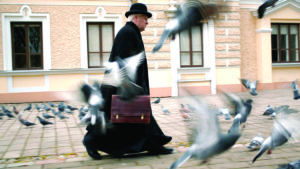
The Lithuanian Documentary Film Festival continued with a docu-drama “The Code of Tumas” by Eimantas Belickas. Readers might remember Belickas as a member of “LT United” – the Lithuanian band led by Andrius Mamontovas that earned 6th place in Eurovision 2006. Belickas is not only a musician but a well-known film editor. Last December he made his directorial debut with a film about Father Tumas Vaižgantas.
Born 150 years ago, Tumas Vaižgantas was a key figure in advancing Lithuania’s independence and went to great lengths to teach the people the requirements of freedom: tolerance and sacrifice. A Roman Catholic priest, he was also a publicist, author, professor of literature, civil activist and in many respects an original persona. There are stories that he walked barefoot down Freedom Avenue in Kaunas, told jokes during sermons, and after passing out all of his spare cash, hung this note on his door: “I don’t lend money, I borrow it.” Tumas led a successful tree planting campaign around Kaunas since Lithuanian forests were devastated by military crossings during World War I. He genuinely believed that being closer to nature brought you closer to God.
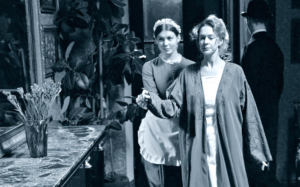
Another docudrama “Chodakowski Sisters: Lithuanian Case” by Ramunė Kudzmanaitė sheds light on the fabled “power” sisters, Sofija and Jadvyga. Sofija was the wife of Lithuanian president Antanas Smetona, Lithuania’s first Lady in 1919-1920 and 1926-1940. Her sister, Jadvyga, married Juozas Tūbelis, the Prime Minister of Lithuania 1929-1938. After the War, both sisters lived in the US. Sofija died in Ohio, while Jadvyga was laid to rest in Putnam, Connecticut in 1988.
Filmmaker Agnė Marcinkevičiūtė fixed her camera lens on the painter Nomeda Saukienė in her documentary entitled “Glow”. Saukienė, a contemporary artist, is often overshadowed by her painter husband Šarūnas Sauka, famous (some critics would say “infamous”) for his daring, often grisly, postmodernist paintings. Marcinkevičiūtė creates a portrait of Saukienė, as a diligent artist and woman.
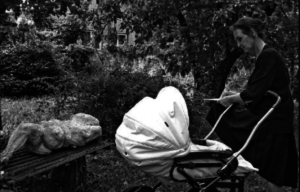
In Martina Jablonskytė’s debut film “Lituanie, my Freedom”, she attempts to retrace the historic steps of statesman and poet Oscar Milosz. He led the Lithuanian delegation to France in 1919. Their objective was to obtain recognition of Lithuania’s sovereignty. The film develops into a philosophical commentary on the essence of freedom.
Andrius Lekavičius exhibited his ground-breaking documentary “Delta Zoo” about the first-ever Lithuanian crack commando unit by the same name. In 1991, the newly re-established Lithuanian Army Command realized it had to react to Soviet aggression swiftly and decided to form a unit of stealth fighters. Lekavičius deftly mixes cumputer graphics, footage from VHS karate action films with never-before-seen archival commando training scenes as well as interviews with soldiers, prepared to defend Lithuania’s freedom.
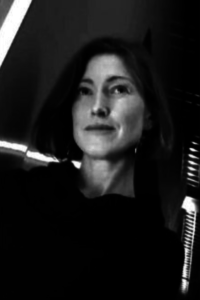
“The Ancient Woods” was one of the most ambitious films presented at the festival. Nature enthusiast Mindaugas Survila took four years to film scenes from one of the last surviving old growth forests in Lithuania.
“The Ancient Woods” was shot using original climbing and diving equipment, which enabled a variety of different camera angles. Because of the film’s unique beauty, it was screened at a commercial AMC theater so that viewers could appreciate the full effect of a wide-screen showing. The forest holds a special place in the Lithuanian psyche. Most fairy tales take place in woods, Lithuanian mythological creatures reside there, partisans fought there. Even today, the Lithuanian emigre continues to long for his native forest with its mushrooms, moss, and mystery. In an interview with Draugas, the director admitted that he is concerned about the future of Lithuania’s woods. “We want the viewer to see the day-to-day activity of a living forest. We have hope that at least one percent of our viewers will fall in love with it. And once they’re in love, they will not allow it to be destroyed.”
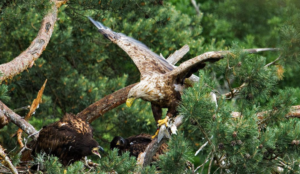
The long-anticipated film “Back to Dreamland” generated the most “buzz” among moviegoers. Director Ramunė Rakauskaitė interviewed a diverse group of Lithuanian Americans from the after-war displaced persons’ generation about their first trips back to Lithuania after the Soviet occupation. For some time after the War, travel beyond the Iron Curtain to Lithuania was prohibited, and even the most innocent correspondence with relatives was a risky undertaking. Only in the late 1960s, several US travel agents began to promote restricted short terms tours to Vilnius, with the rest of Lithuania still being off-limits. These trips, however, did not sit well with many in the Lithuanian diaspora. On the whole, they were suspicious of what they perceived to be a collaboration with the Soviet occupiers.
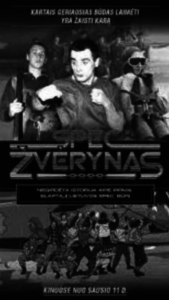
Kornelijus Jazbutis was one of the first to take advantage of this new travel opportunity. His parents, both teachers, were deported to Siberia in June 1941. The eight-year-old Kornelijus was left behind – a virtual orphan. He and his younger sister fled to Germany with their uncle’s family in 1944. There, they were registered as orphans and were thus allowed to come to the US without constraints. In 1966, Kornelijus flew back to Lithuania to meet his parents whom he had not seen for over twenty-five years. Another traveler, Daina Čyvas, traveled to Lithuania by train from the Vasario 16 (February 16) Gymnasium in Germany in the late 1970s. Only a high school student, Daina smuggled microfilms of the underground press to the West. Petras V. Kisielius spoke about continually being followed by KGB agents during his trip to study at the Vilnius University 1978 summer session. Teresė Boguta provided some rare super-8 film footage of her journey to her mother’s village — a trip that was forbidden by the authorities. Vytautas and Birutė Zalatorius and Henrietta Vepštas had allowed their children to attend a Pioneer camp in Lithuania in 1972. At the time this trip generated sharp disagreements in Chicago’s Lithuanian community, and the issue remains controversial to this day.
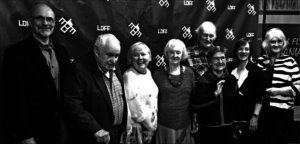
Rakauskaitė selected an exceptional representative group of travelers to interview; they were intelligent and articulate, and their stories were compelling. She masterfully intercut found footage from 1970s Lithuania as well as Soviet propaganda films, which served to highlight the absurdity of the system. This made for a well-paced, enjoyable film to watch.
The film, however, suffers from being produced too late. Most of the interviewees were already born in Germany or the US. They didn’t leave their homeland, their parents did. Regrettably, many who fled Lithuania have already died, and the stories of their return were not recorded. Their experiences, like that of Kornelijus Jazbutis, were especially emotional and psychologically stressful. (One need only to look at recent footage of North and South Korean families reunited after years of separation, to imagine what was happening at the Vilnius Airport forty years ago.) It is those stories that could shed light on the human cost of the Soviet occupation to the Lithuanian nation.
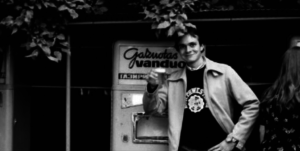
Rakauskaitė, of course, needs to be applauded for tackling this subject. Her film is also a piercing reminder that the Lithuanian American community has not done enough to archive its experiences.
The LDFF films played to sold-out audiences. Most of the moviegoers were recent immigrants from Lithuania, but there were also decent numbers from the DP generation and descendants of early 20th century immigrants. Most films had English subtitles, and the post-film discussions were held in English as well. The LDFF is probably the only event (besides our grand folk dance festivals), that unites all waves of immigration. What’s more important, it fosters discussions on Lithuanian history, art, social concerns, even climate change, and environmentalism. It was an enjoyable and enlightening experience.
I look forward to next year’s documentary line up.
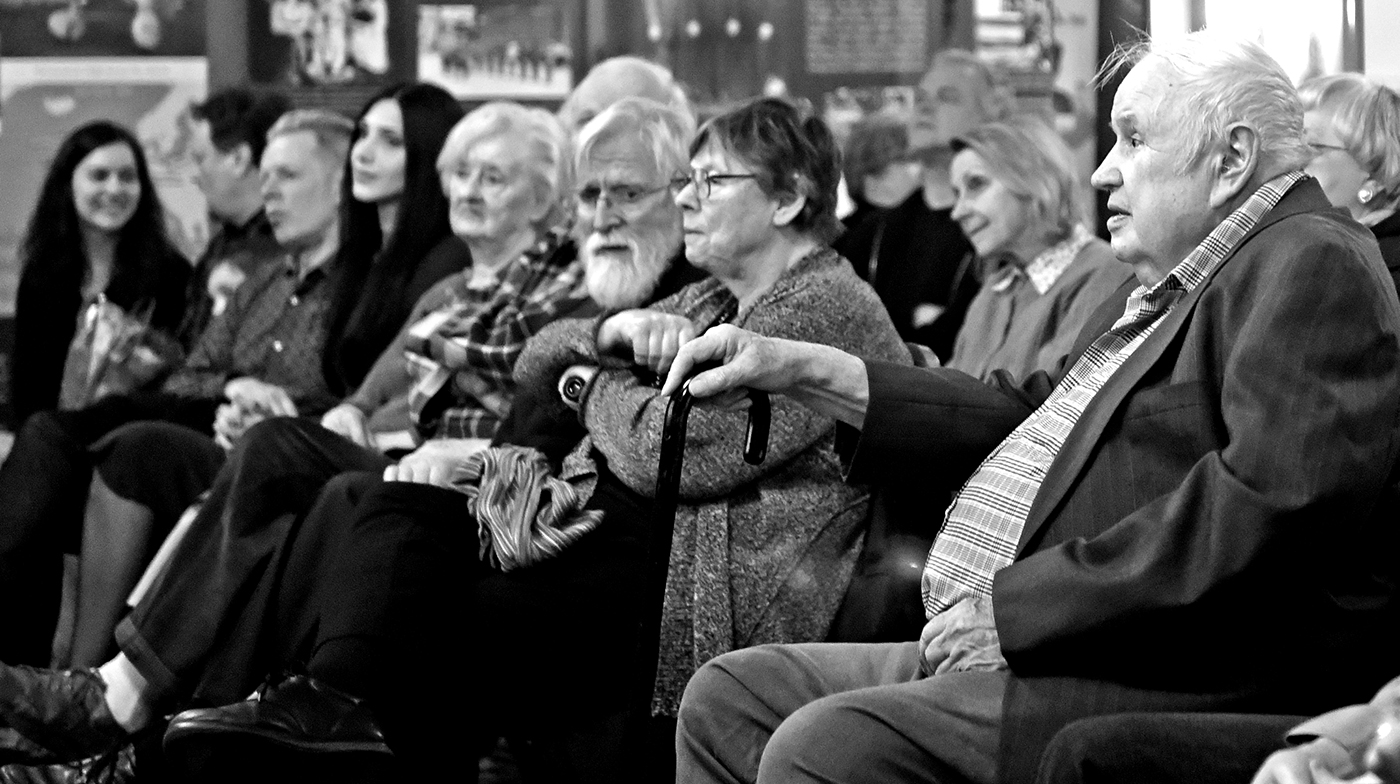
 DRAUGAS NEWS Lithuanian World Wide News in English
DRAUGAS NEWS Lithuanian World Wide News in English
